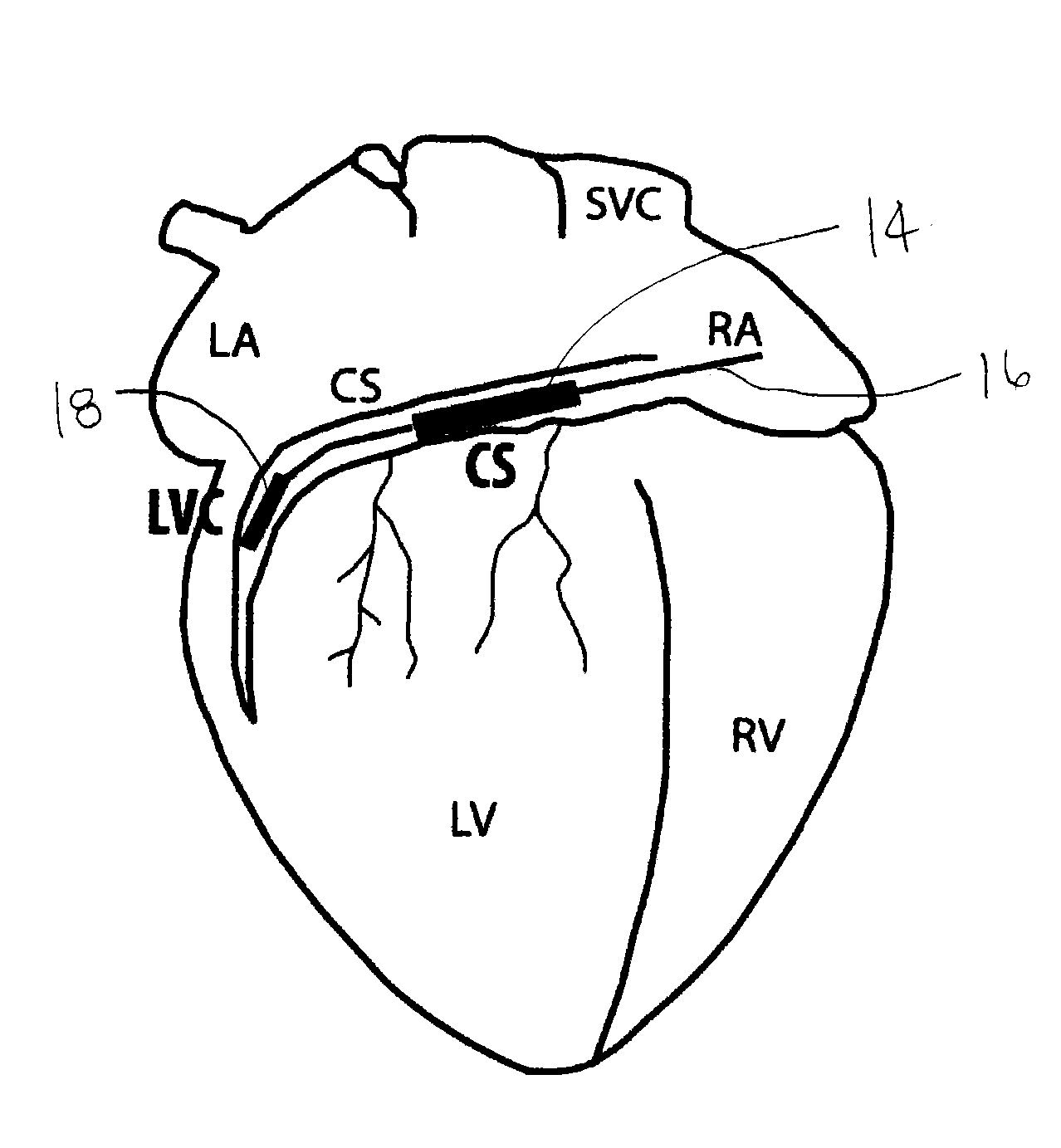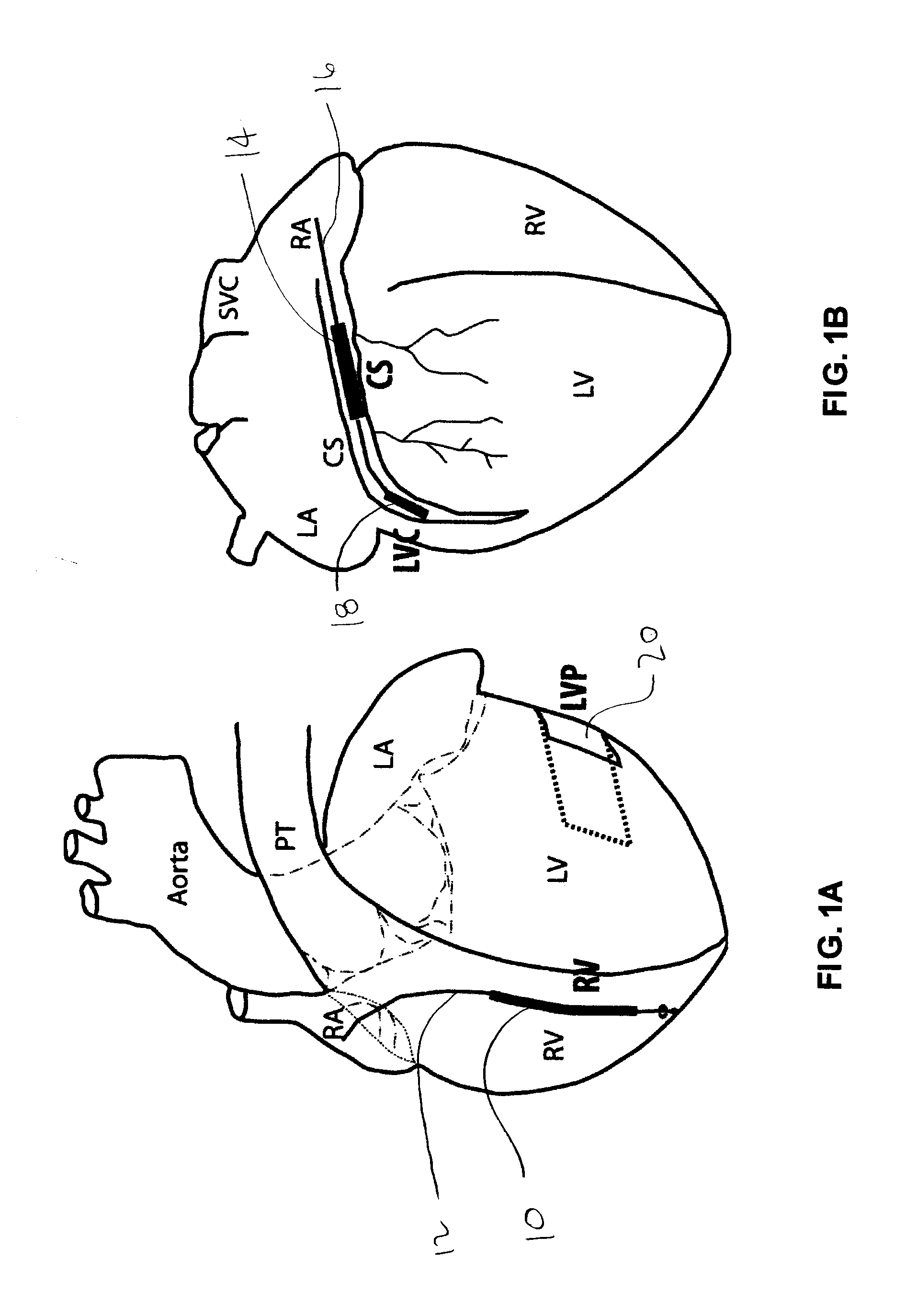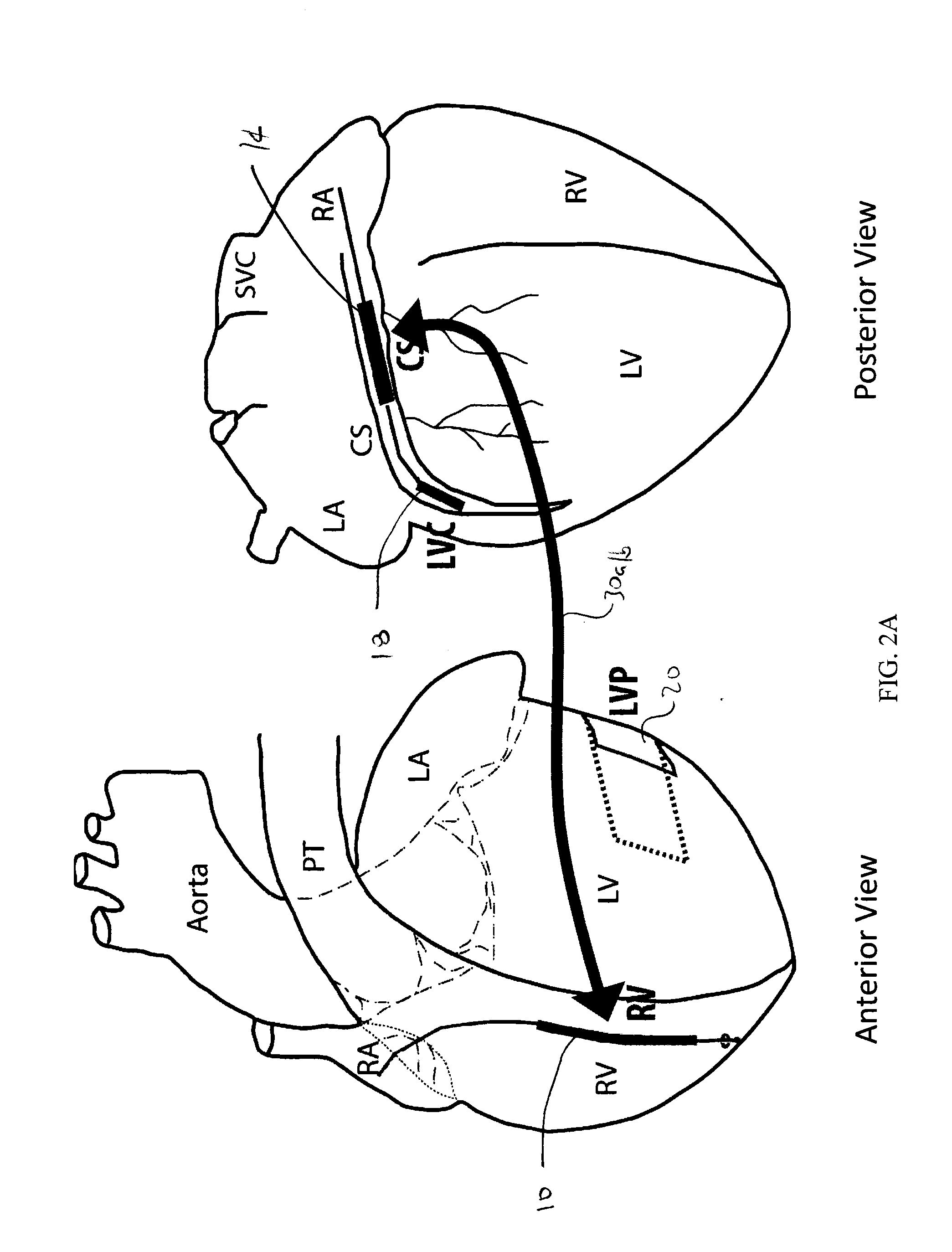Methods and devices for three-stage ventricular therapy
a three-stage ventricular and ventricular arrhythmia technology, applied in electrotherapy, therapy, heart stimulators, etc., can solve the problems of not being able to overcome anatomical reentries as effectively, the energy level needed for successful cardioversion can also exceed the pain threshold, and achieve the effect of reducing the energy required to convert a ventricular arrhythmia without exceeding the pain threshold of a patien
- Summary
- Abstract
- Description
- Claims
- Application Information
AI Technical Summary
Benefits of technology
Problems solved by technology
Method used
Image
Examples
Embodiment Construction
[0038]Embodiments of the present disclosure are based on a low-voltage phased unpinning far-field therapy together with near-field therapy that forms the three-stage ventricular cardioversion and defibrillation therapy for destabilizing and subsequently terminating anatomical reentrant tachyarrhythmias. A significant reduction in the energy required to convert a ventricular arrhythmia can be obtained with this unpinning, anti-repinning and then extinguishing technique compared with conventional high-energy defibrillation. Furthermore, the low-energy, ventricular therapy enables successful cardioversion without exceeding the pain threshold of a patient. With respect to pain and pain-related subject matter described hereinafter, it will be understood that such description generally relates to cardioversion of ventricular tachycardia (VT), rather than conversion of ventricular fibrillation (VF). Further, it will be understood the term “cardioversion” refers specifically to cardioversio...
PUM
 Login to View More
Login to View More Abstract
Description
Claims
Application Information
 Login to View More
Login to View More - R&D
- Intellectual Property
- Life Sciences
- Materials
- Tech Scout
- Unparalleled Data Quality
- Higher Quality Content
- 60% Fewer Hallucinations
Browse by: Latest US Patents, China's latest patents, Technical Efficacy Thesaurus, Application Domain, Technology Topic, Popular Technical Reports.
© 2025 PatSnap. All rights reserved.Legal|Privacy policy|Modern Slavery Act Transparency Statement|Sitemap|About US| Contact US: help@patsnap.com



